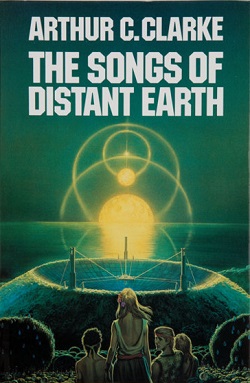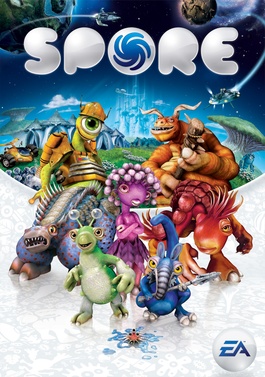
A carnivore, or meat-eater, is an animal or plant whose food and energy requirements are met by the consumption of animal tissues whether through hunting or scavenging.

Food is any substance consumed by an organism for nutritional support. Food is usually of plant, animal, or fungal origin and contains essential nutrients such as carbohydrates, fats, proteins, vitamins, or minerals. The substance is ingested by an organism and assimilated by the organism's cells to provide energy, maintain life, or stimulate growth. Different species of animals have different feeding behaviours that satisfy the needs of their metabolisms and have evolved to fill a specific ecological niche within specific geographical contexts.

Eating is the ingestion of food. In biology, this is typically done to provide a heterotrophic organism with energy and nutrients and to allow for growth. Animals and other heterotrophs must eat in order to survive — carnivores eat other animals, herbivores eat plants, omnivores consume a mixture of both plant and animal matter, and detritivores eat detritus. Fungi digest organic matter outside their bodies as opposed to animals that digest their food inside their bodies.

The Dark Side of the Sun is a science fiction novel by Terry Pratchett, first published in 1976.
Kevin and Kell is a furry comedy webcomic strip by syndicated cartoonist Bill Holbrook. The strip began on September 3, 1995, and is one of the oldest continuously running webcomics. The comic's website states it is "The World's Longest Running Daily Webcomic".

The Songs of Distant Earth is a 1986 science fiction novel by British writer Arthur C. Clarke, based upon his 1958 short story of the same title. Of all of his novels, Clarke stated that this was his favourite. Prior to the publishing of the novel, Clarke also wrote a short step outline with the same title, published in Omni magazine and anthologised in The Sentinel in 1983.

The War Against the Chtorr is a series of science fiction novels by American writer David Gerrold. The Chtorr series was originally planned as a trilogy, but as the story became more intricate, Gerrold realized that three books would not be enough for him to tell the entire story. For a time, he was uncertain how many books there would be in the end but plans on seven. As of 2022, four books have been completed. As of 2017, a fifth and sixth were in the works, 24 years after the publication of the fourth book.

The Martians, also known as the Invaders, are the main antagonists from the H.G. Wells 1898 novel The War of the Worlds. Their efforts to exterminate the populace of the Earth and claim the planet for themselves drive the plot and present challenges for the novel's human characters. They are notable for their use of extraterrestrial weaponry far in advance of that of mankind at the time of the invasion.

The Cozumel raccoon is a critically endangered species of island raccoon endemic on Cozumel Island off the coast of the Yucatan Peninsula, Mexico. It is sometimes also called the pygmy raccoon, dwarf raccoon, Cozumel Island raccoon, and Cozumel raccoon bear.
This is a list of works by Piers Anthony.

The trophic level of an organism is the position it occupies in a food web. Within a food web, a food chain is a succession of organisms that eat other organisms and may, in turn, be eaten themselves. The trophic level of an organism is the number of steps it is from the start of the chain. A food web starts at trophic level 1 with primary producers such as plants, can move to herbivores at level 2, carnivores at level 3 or higher, and typically finish with apex predators at level 4 or 5. The path along the chain can form either a one-way flow or a part of a wider food "web". Ecological communities with higher biodiversity form more complex trophic paths.
Natural History of an Alien, also known as Anatomy of an Alien in the US, is an early Discovery Channel pseudo-documentary similar to Alien Planet, aired in 1998. This pseudo-documentary featured various alien ecosystem projects from the Epona Project to Ringworld. It also featured many notable scientists and science fiction authors such as Dr. Jack Cohen, Derek Briggs, Christopher McKay, David Wynn-Williams, Emily Holton, Peter Cattermole, Brian Aldiss, Sil Read, Wolf Read, Edward K. Smallwood, Adega Zuidema, Steve Hanly, Kevin Warwick and Dougal Dixon.

Spore is a 2008 life simulation real-time strategy god game developed by Maxis and published by Electronic Arts for Microsoft Windows and Mac OS X. Designed by Will Wright, it covers many genres including action, real-time strategy, and role-playing games. Spore allows a player to control the development of a species from its beginnings as a microscopic organism, through development as an intelligent and social creature, to interstellar exploration as a spacefaring culture. It has drawn wide attention for its massive scope, and its use of open-ended gameplay and procedural generation. Throughout each stage, players are able to use various creators to produce content for their games. These are then automatically uploaded to the online Sporepedia and are accessible by other players for download.

An omnivore is an animal that has the ability to eat and survive on both plant and animal matter. Obtaining energy and nutrients from plant and animal matter, omnivores digest carbohydrates, protein, fat, and fiber, and metabolize the nutrients and energy of the sources absorbed. Often, they have the ability to incorporate food sources such as algae, fungi, and bacteria into their diet.
The Pandoran biosphere is a fictional habitat introduced in James Cameron's 2009 science fiction film Avatar. The ecology of the lush exomoon Pandora, which teems with a biodiversity of bioluminescent species ranging from hexapodal animals to other types of exotic fauna and flora, forms a vast neural network spanning the entire lunar surface into which the Na'vi and other creatures can connect. The strength of this collective consciousness is illustrated when the human invaders are defeated in battle by the Pandoran ecology, after the Na'vi are nearly defeated. Cameron utilized a team of expert advisors to make the various examples of fauna and flora as scientifically feasible as possible.

Biting is an action involving a set of teeth closing down on an object. It is a common zoological behavior, being found in toothed animals such as mammals, reptiles, amphibians, fish, and arthropods. Biting is also an action humans participate in, most commonly when chewing food. Myocytic contraction of the muscles of mastication is responsible for generating the force that initiates the preparatory jaw abduction (opening), then rapidly adducts (closes) the jaw and moves the top and bottom teeth towards each other, resulting in the forceful action of a bite. Biting is one of the main functions in the lives of larger organisms, providing them the ability to forage, hunt, eat, build, play, fight, protect, and much more. Biting may be a form of physical aggression due to predatory or territorial intentions. In animals, biting can also be a normal activity, being used for eating, scratching, carrying objects, preparing food for young, removing ectoparasites or irritating foreign objects, and social grooming. Humans can have the tendency to bite each other whether they are children or adults.











